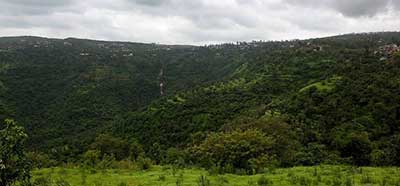Relevance: GS-3: Conservation, Environmental Pollution and Degradation
Key Phrases: ESAs, Kasturirangan Committee report, Madhav Gadgil Committee report, ‘Red’, ‘Orange’ and ‘White’ category industry;
Context
- The Environment ministry has released a draft notification for ESAs
(Ecologically Sensitive Areas) in 4 states - Karnataka, Tamil Nadu, Gujarat,
and Maharashtra.
- Among these states, most of the area to be marked as ESAs is located in Karnataka
- Hence, this draft notification is facing stiff opposition in Karnataka.
Key Highlights
ESAs and Western Ghats
- These are areas where only some anthropogenic activities are allowed. The aim is to balance the needs of the indigenous communities along with protecting the forest landscape.
- Kasturirangan Committee Report
- This report recommended that 37% of Western Ghats be declared as ESA to protect the fragile ecology.
- This report was brought in by the government after the Gadgil Committee [Western Ghats Ecology Expert Panel (WGEEP)] had recommended that all of the Western Ghats be declared as ESAs.
Western Ghat
- It is spread over 6 states, namely - Gujarat, Maharashtra, Goa, Karnataka, Kerala and Tamil Nadu.
- It hosts many endangered and threatened flora and fauna which are
endemic to this region.
- Nilgiri Tahr (EN)
- Lion-Tailed Macaque (EN)
- It hosts India’s richest wilderness in 13 national parks and several sanctuaries.
- UNESCO has recognised WG as one of the world’s eight most important Biodiversity hotspots.
Activities banned or regulated in ESAs:
- Banned activities
- A complete ban on mining, quarrying and sand mining is to be observed.
- Existing mines are either,
- supposed to be phased out in 5 years.
- Or, on the expiry of the mining lease.
- Thermal Power Plants (TPPs)
- No New TPPs will be allowed to be set up.
- No extension of the brownfield TPPs.
- ‘Red’ category industries
- These will be banned outrightly.
- These industries are involved in activities which have a
pollution index score of 60 and above
- E.g. petrochemical manufacturing and coal liquefaction.
- The construction of new township and area development projects will also be prohibited.
- Regulated Activities
- New Hydro Power Projects will be allowed after Environment Impact Assessment (EIA).
- ‘Orange’ Category Industry will also be allowed after EIA.
- These are industries which are involved in activities with a
pollution index of ‘41-59’.
- E.g. Jute Processing
- These are industries which are involved in activities with a
pollution index of ‘41-59’.
- ‘White’ Industries are to be allowed post-EIA
- These are considered non-polluting industries
- E.g. Chalk making
- These are considered non-polluting industries
Implementation of these norms
- Establishment of Decision Support and Monitoring Centre (DSMC) for
the Western Ghats
- This will be established by the Environment Ministry along with the State governments of the Western Ghats (WG) region.
- It will regularly assess and report the status of the ecology of WG.
- It will also provide a decision support facility to implement the provisions of the notification.
- Post-clearance monitoring of projects by respective State PCBs (Pollution Control Boards).
- State of Health Report will be prepared by state governments on annual
basis.
- This will be done by states in the WG region.
- This will contain the details about steps taken to monitor and enforce the provisions of the notification.
Suggestions by Kasturirangan Committee
- Need to bring synergy between
- the aims of protecting the environment and biodiversity.
- maintaining the needs and aspirations of the local and indigenous people, for sustainable development and environmental integrity of the region.
- The impact of infrastructural projects on the forest and wildlife should be studied before permission is given.
Way Forward
- Discussion amongst stakeholders is necessary to balance the needs of the
Environment and people.
- Only a bottom-up approach can result in a long-term solution.
- Kerala Government's steps regarding the Kasturirangan Committee Report
could be followed
- Kerala Government had proceeded with physical verification of the areas to be designated as ESAs as per the report.
- Upon discussion with all stakeholders, this area was decreased from 13K Sq Km to 10 K Sq Km.
Conclusion
- Kerala Floods (2018) and frequent landslides in the WG region have confirmed that the needs of the environment can’t be made secondary to the needs of people. Hence, a synergy is required to ensure nature is conserved along with meeting the needs of the local communities.
- It is said ‘Prakriti Rakshati Rakshatah’ Nature protects when protected.
Source: Indian Express
Mains Question:
Q. What are the provisions of the new draft notification of ESAs for the Western Ghats? What are its challenges and how can they be remedied?








